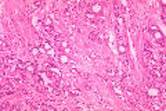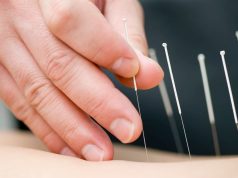Patients with higher PSA, shorter PSA doubling time more likely to have second scan
TUESDAY, April 21, 2015 (HealthDay News) — For men with nonmetastatic (M0) castration resistant prostate cancer who have a negative bone scan after diagnosis, factors associated with a second bone scan include higher prostate-specific antigen (PSA), shorter PSA doubling time, and faster PSA velocity; however, there may be under imaging in those at high risk and over imaging in those at low risk, according to a study published in the April issue of the The Journal of Urology.
Katharine N. Sourbeer, from the Durham Veterans Affairs Medical Center in North Carolina, and colleagues examined imaging practice patterns in men with M0 castration resistant prostate cancer. Data were included for 247 patients, who were selected regardless of primary treatment modality. All patients had a negative bone scan after diagnosis; correlations of time to a second imaging test were assessed.
The researchers found that 77 percent of patients underwent a second imaging test during a median follow-up of 29 months after a post-castration resistant prostate cancer bone scan was negative. On univariable analysis, patients with higher PSA (hazard ratio, 1.13), shorter PSA doubling time (hazard ratio, 0.79), and faster PSA velocity (hazard ratio, 1.01) were more likely to undergo a second imaging test. Treatment center also significantly predicted a second imaging test. Similar results were obtained on multivariate analysis.
“Clinicians use some known predictors of positive imaging tests to determine which patients with M0 castration resistant prostate cancer undergo a second imaging test,” the authors write. “However, there may be under imaging in those at high risk and over imaging in those at low risk. Further studies are needed to identify risk factors for metastasis and form clear imaging guidelines in patients with M0 castration resistant prostate cancer.”
Two authors disclosed financial ties to pharmaceutical companies, including Amgen, which supported the study.
Copyright © 2015 HealthDay. All rights reserved.








